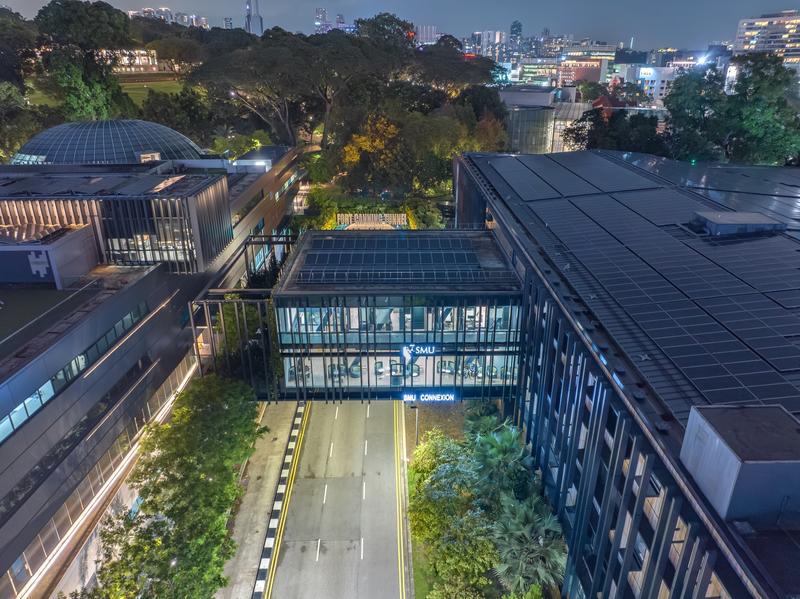Cultivate a Greener University
Our Goals
- Sustainable energy use
- Sustainable construction and refurbishment
- A zero waste campus
- Sustainable water management
- Sustainable procurement
- Sustainable investing

What we have done
1. Sustainable energy use
Expanded onsite solar generation capacity by maximising available roof space.
Changed all lights to LED.
Upgraded air handling units.
Installed electric vehicle charging points.
2. Sustainable construction and refurbishment
Utilised new technologies and methodologies in the construction of our new buildings - SMU Connexion and School of Social Sciences/College of Integrative Studies, to reduce embodied carbon and energy efficiency, and increase construction productivity.
Prefabricated mechanical, electrical and plumbing systems and Design for Manufacturing Assembly methodology were employed in the construction of new buildings - SMU Connexion and School of Social Sciences/ College of Integrative Studies.
Mass Engineered Timber in a hybrid system comprising Cross Laminated Timber floor slab with prefabricated steel structure in the new buildings, reducing overall embodied carbon.
Enhanced Passive Displacement Cooling (EPDC) to cool the entire building.
3. Zero waste campus
Phased out single-use plastics and utensils and packaging that are not environmentally friendly from all retail, and food and beverage tenants.
Installed food waste digesters.
Installed e-waste collection for personal electronic items and used batteries.
Conducted food waste reduction and segregation campaigns.
4. Sustainable water management
Converted underground water tanks into rainwater harvesting tanks, reusing water collected for landscape irrigation.
Installed system to collect condensate water from air handling units for landscape irrigation.
Installed water meters on campus to monitor and manage water usage effectively.
5. Sustainable procurement
Developed sustainable procurement framework in alignment with UN SDGs and encouraged suppliers to adopt the framework.
Assessing supply chain emissions.
6. Sustainable investment
Conducted a baseline assessment of financed emissions.
Developed a standard ESG template for manager due diligence to engage and understand managers' consideration of ESG factors in their investment process.